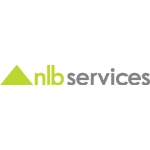© 2025 Next Level Business Services Inc. All Rights Reserved.
Building Supply Chain Resiliency in the New Normal
By NLB Services
The Covid-19 crisis has thrown into sharp focus the inadequacies and weakness of globalized supply chains. As businesses reel from the broader economic impact, the boardroom talk has turned firmly towards avoiding a similar fate in the future. Even as organizations scramble to manage as best as they can, discussions are focusing on post Covid-19 planning – a big part of which is building resilient and shockproof supply chains.
In a recently concluded webinar, some critical facets of building agile and robust supply chains were articulated by a cross-section of industry experts. Here we present them in brief.
What Critical Factors Are Needed To Build A Resilient Supply Chain?
Complacency is the killer. For most companies, the conversation focuses on business continuity; it’s about balancing cost vs. availability and the attention is on trying to work through geopolitical changes. However, the first step towards building resiliency is to recognize the potential weakness in your current comfortable process..
Forcing yourself to think of situations that could impact current operations is a necessary first step. With this mind-set, organizations need to categorize and rank potential risks and build plans to mitigate them. Breaking existing challenges such as siloed data records or analytical processes and ensuring proper access to insights from data sources can help in this process.
To be resilient, you must sustain key inputs of your operations, even at a reduced scale, to retain the ability to return to normal. For this, organizations should possess the right tools to understand their supply chain in detail, have situational awareness, and build plans with established trigger warnings to provide sufficient react time to execute BCP strategies to survive in the face of cascading situations.
How Can Service Companies Become More Resilient?
Service businesses have a gross margin of 39%, which compares favourably with 27% achieved by product businesses. The growth rate is also higher at 9% as compared to the 5% managed by product businesses. However, while it’s a more attractive business proposition, they usually have more complex supply chains.
A recent survey showed that 55% of companies said they are vulnerable to disruption in the supply chain, but they have no contingency plan. They didn’t invest in supply chain risk management because leaders were hesitant to allocate money in preparation for a problem that might never happen. The best way out of this is to make risk mitigation systems deliver value for standard business metrics such as meeting SLAs, reducing OPEX, and meeting customer experience. For example – a supply chain risk management system that combines a multi-tier supply based analysis, continuous event monitoring, and integrates parts planning can be used during regular times and can be a lifesaver during difficult times.
How Can A Company Balance The Cost Of Digital Transformation Against Its Benefits?
Digital Transformation should be all about solving a specific business problem. According to a report by McKinsey, organizations can realize increased EBITDA and revenue through aggressive digitization of Supply Chains.
However, the same study also pointed out that only 2% of executives said supply chain was the focus of their strategies, but the ones who were aggressive with the digitization of supply chain gained additional 3.2% growth. Clearly, the digital supply chain management was more robust and gave excellent ROI.
To reap benefits, a digital supply chain should have 3 critical characteristics:
1. Visibility and end-to-end tracking across all touch points
2. Velocity with real-time flow of information and,
3. Responsiveness to quickly act on the insights presented by the data.
In today’s unprecedented times, companies cannot ignore the benefits of digital transformation, but before going on a data-gathering rampage or spending millions on digital transformation budget, companies should use and extract value from the data they are already sitting on. Demand forecasting, vendor optimization, and dispatch planning and optimization – all these areas can benefit from context-based analytics of organizational data flow.
They must invest in supply chain automation, but smartly and with an eye on the final ROI. Managers must evaluate why they are investing in specific tech and only jump on board if it solves a business problem.
What Causes Lack Of Visibility In Supply Chains?
In service industries, the multitude of systems and lack of integration contribute heavily to a lack of visibility. The usual ERP solutions that work well for manufacturing ecosystems don’t translate well into service business ecosystems. IoT has brought in a great deal of data, and only companies that can successfully parse, analyze, and monetize it will emerge as market leaders.
For several other industries, transparency issues crop up because of the buy-sell transactions embedded in the supply chain. Particularly for imported goods, buyers can’t see secondary and tertiary suppliers. In industries like pharmaceuticals, food additives, spice components, etc. many brokers hide primary sources or conceal prices to constrain competitors. The widely used just-in-time inventory practices have given rise to issues such as counterfeiting, adulteration, and altercation for avoiding custom duties. A shared effort to document the components and participants in the complete supply chain to include transportation, transaction, and financial aspects could be the right way to provide visibility.
What Steps Can Organisations Take To Build Better Supply Chain Resiliency
1. Create a business continuity plan if you don’t already have one.
2. Create strong resource partnerships.
3. Keep revisiting and tweaking your continuity plan.
4. Strive to create agility in your supply chain.
One way to build the flexibility mentioned above is to tap into and gain insights from your organizational data. Inventory level data, supplier information, transportation facts, etc. are all easily available in-house and can provide many precious nuggets of insights with minimal cost. Invest judiciously – and in small increments – in data analytics tools.
Conclusion
Few years back, almost every business contingency or continuity discussion had someone saying – that’s never going to happen! Well, guess what? It did happen.
We must use the lessons of this pandemic to rethink how we do business in the future, how we build our supply chains, and how to keep operating under unseen and unprecedented times. For this, organizations require a clear, data-led view into the future – to plan and to build business agility to adapt.
Talent Solutions








